
Corn history: Corn on the cob
Teosinte and corn
Corn is a kind of seed, like rice or wheat, that comes originally from a kind of wild grass that grows in Mexico called teosinte.
Evolution of seeds
When did grasses evolve?
Central American food
All our Central America articles
Corn has lots of carbohydrates, but not as much protein as wheat or barley. Corn also has some vitamins, especially Vitamin B and Vitamin C.
What are carbohydrates?
Why do we need protein?
Farming corn: 7500 BC
People first began to farm corn (instead of picking it wild) around 7,500 BC in Mexico, a little later than they started to farm squash and avocados.
More about squash
And about avocados
The Olmec in Mexico
Gradually people bred the corn plants to have more and more corn – bigger ears, with more kernels, and easier to eat – and fewer leaves. Soon – about 6000 BC – their southern neighbors in Ecuador were growing corn too. By about 1 AD, the Pueblo people in North America also grew corn.
Corn tortillas, tamales, polenta, and popcorn
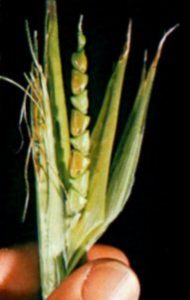
Corn history: Teosinte
People ate corn fresh when it ripened in summertime, by roasting or boiling the ears, or by making popcorn. But mostly they dried the kernels and crushed them into cornmeal, and then used the cornmeal to make tacos or tortillas.
Where do pinto beans come from?
All about chili peppers
They filled the tacos with bean mush and vegetables like chili peppers. That way you could store the corn and eat it all year round. Some people also stirred cornmeal into boiling water to make pudding (kind of like oatmeal).
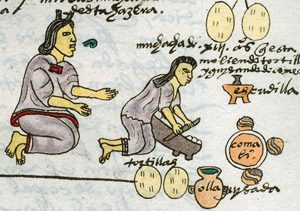
Corn history: A woman teaches her daughter to make tortillas (Codex Mendoza, 1542, now in the Bodleian Library)
Growing corn further north
When Iroquois people began to grow corn further north, in the north-east part of North America, about 1000 AD, they found that the corn took too long to get ripe. Often frost killed the plant before the corn was ripe.
Who were the Iroquois?
Iroquois food
Native American environment
Iroquois people had to slowly adapt the plant to the northern climate by making it evolve a shorter growing season. In the north, corn only got ripe at the very end of the summer. And if the summer ended a little early, sometimes the corn didn’t get ripe at all.
Corn soup and corn pudding
Because it was cold enough to need a big fire for warmth so far north, the Iroquois cooked their corn by boiling it over their fire: they ate mainly corn pudding, corn mush, or corn soup. They didn’t make so many tacos or tortillas, which you cook on hot rocks over a small cooking fire.
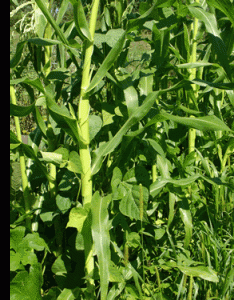
Corn, beans, and squash growing together: the Three Sisters
The Three Sisters
By this time, a lot of Native and Mexican and South American people had figured out a way to save space when they were growing corn. They grew the corn in the same field as beans and squash. People called these three plants the Three Sisters and there were stories about these three plants in Native American religion.
The Three Sisters: corn, beans, and squash
Three Sisters in Native religion
Spanish take corn to Europe, Africa and Asia
When the first Spanish and Portuguese explorers came to Mexico in the late 1400s, they saw lots of people eating corn. Traders brought Mexican corn to Europe, where farmers grew it mainly to feed cows.
And they brought corn to West Africa and sold it to farmers there. By 1540, corn was already a main food for West Africans. In the 1600s farmers were also growing corn in Ming Dynasty China, Mughal India and all down the coast of East Africa.
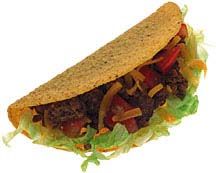
A corn tortilla made into a taco
English settlers learn to grow corn
When English settlers first came to North America in the 1500s, the Iroquois and other Native Americans showed the English settlers how to grow corn too. Like the Iroquois, the English settlers ate a lot of “hasty pudding” – corn pudding. But they also made the corn into bread like the wheat bread they had eaten back home in England, which we know now as cornbread.
Tisquantum
In 1621, when the Pilgrims arrived in Cape Cod, a Native Patuxet man named Tisquantum greeted them. A few years earlier, English traders had kidnapped Tisquantum and brought him back to England, where he learned English. In 1620, Tisquantum finally got home again, only to find out that everyone he knew – his whole town – had died of smallpox or measles they caught from the English traders. Tisquantum was lonely and sad, and when the Pilgrims arrived and settled down in his empty village, he showed them how to farm the abandoned corn fields there.
Americans today: corn syrup, cornbread, tacos, and popcorn
Today most people in North America eat a lot of corn. Some people eat cornbread. Many people eat corn that has been turned into corn syrup to sweeten things like bread or Coke or Froot Loops. But most people in this country, including modern Pueblo people, also eat corn just the way the Pueblo people did two thousand years ago, as tacos or tortillas, or as popcorn.
Did you find out what you wanted to know about the history of corn? Let us know in the comments!
Learn by Doing – A Corn Project
A recipe for cornmeal crust pizza
Bibliography and further reading about the history of corn:

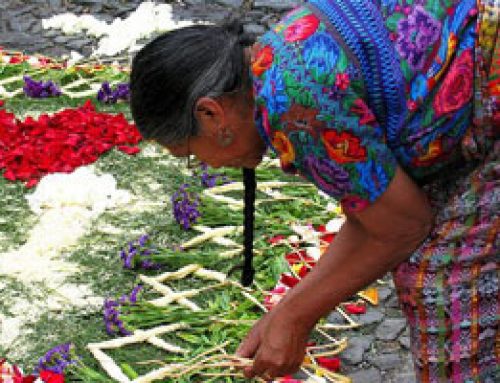
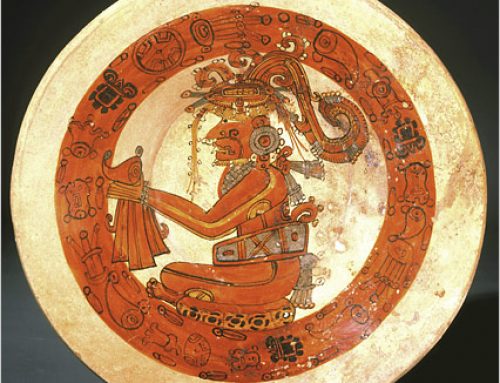

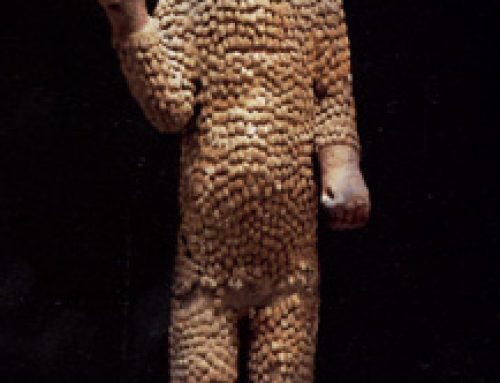
Hi I love corn
Me too! But most of the corn we eat, and that ancient people ate, is not in the form of fresh corn but in tortillas, cornbread, tamales, popcorn, and so on. (I like those, too!)
when and where did native american … started to cultivating corn
The answer is right there in the article. Some Native Americans in what is now the United States were growing corn by around 2000 years ago (1 AD). Gradually more and more people started to grow corn, further away from Mexico and further north. The Iroquois started to grow corn about 1000 years later.
[…] K https://quatr.us/central-america/history-corn-corn-come.htm (last viewed […]
When were the Europeans first introduced to corn?
Europeans first ate corn when Columbus reached the Caribbean in 1492. But most Europeans still think of corn and cornbread and tortillas as pretty exotic foods, even though they are common in the United States. In Europe, most of the corn goes to feed cattle, not for people to eat. (Actually, even in the United States, about 40% of our corn goes to biofuels and another 30% feeds animals, so we only eat about 30% of our corn.) https://www.scientificamerican.com/article/time-to-rethink-corn/
when was corn first discovered
One more thing, when was corn first made.
I’m pretty sure the answer to that is in the article?
Why is corn so important in southern mexico?
It’s a traditional source of carbohydrates, from back when people in Mexico didn’t have wheat or barley or rice or millet.
How did people come up with the name”Corn”?
That’s a great question, Lily!
In the 1400s, when English-speaking people first ate corn, “corn” was the English word for any kind of grain – wheat, barley, rye, millet. So “corn” was just their way of saying “grain”. (And it still is, in England, where they call our corn “Maize”).
That word, “corn”, comes originally from a Yamnaya word meaning something like “ripened” or maybe “ground up” (nobody is sure). The word “maize” comes from the Arawak word for corn. (More about the Yamnaya here: https://quatr.us/central-asia/who-were-the-indo-europeans.ht and about the Arawak here: https://quatr.us/south-america/arawak-south-american-history.htm)
Who were the first people to grow corn?
I’m sorry, I don’t have a name for those people. All I know about them is that they lived in southern Mexico.
Thanks Karen. I was asking because we are doing a project in class were we have to research corn and find out a way to grow corn on mars.
Good luck! I don’t know if it is possible to grow corn on Mars, but if there is a way I hope you find it!
settler did things wrong.
The European settlers did a lot of things wrong! Some of them were just things anybody might do wrong who was trying to learn how to live in a new country. Some of the things they did wrong were because they didn’t think you had to treat people right if they weren’t white.
where did the native americans first teach english settlers how to harvest corn
English settlers first learned how to plant corn (then later how to harvest it) from a Pawtuxet man named Tisquantum, in 1621. Tisquantum had been kidnapped by earlier English traders and lived for several years in England, so he spoke English. He had managed to get home to America only to find out that his entire family and village had just died of smallpox or measles – diseases brought by the English traders. He was trying to figure out what to do next when the English settlers showed up and settled into his old village, where the houses and fields were still there, but all the people had died.